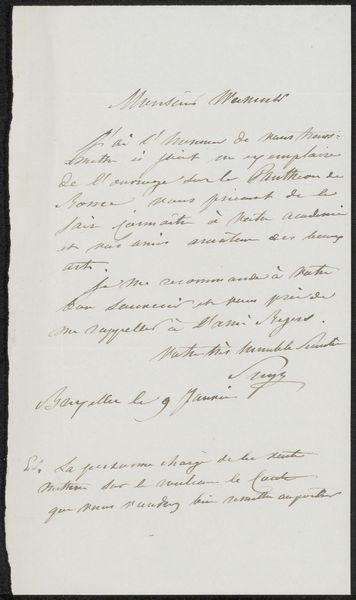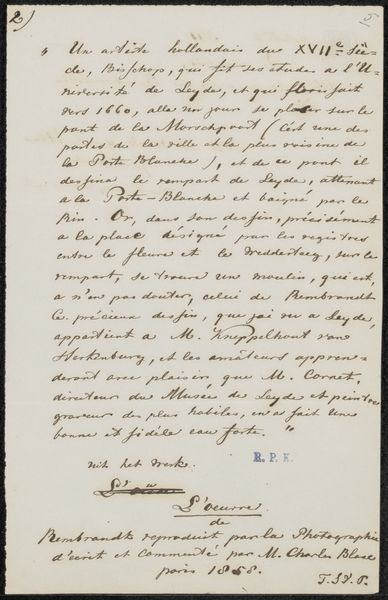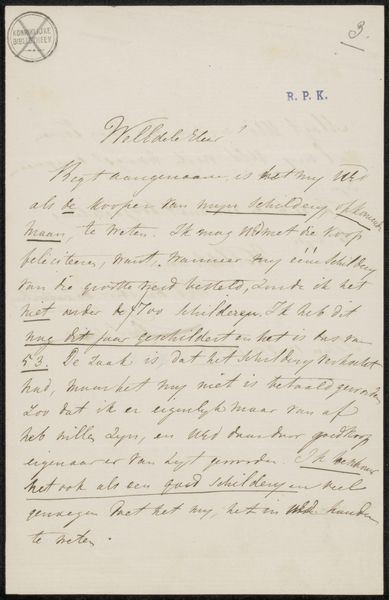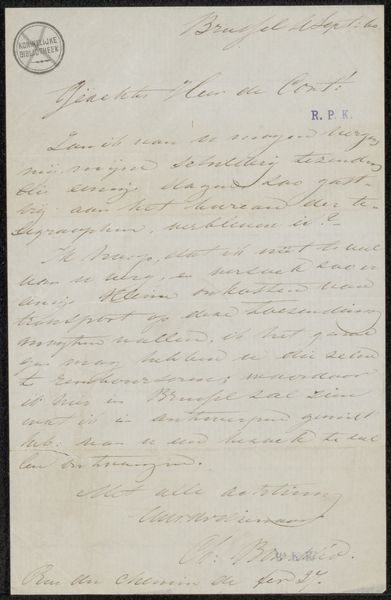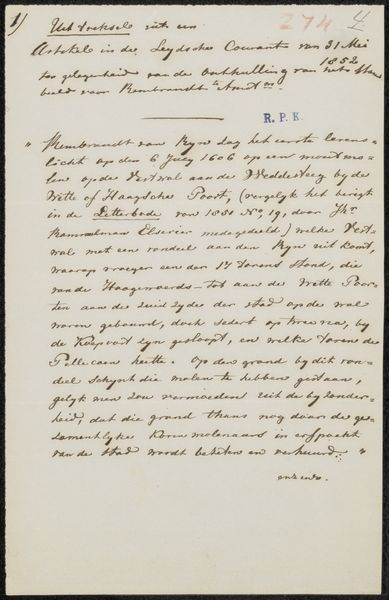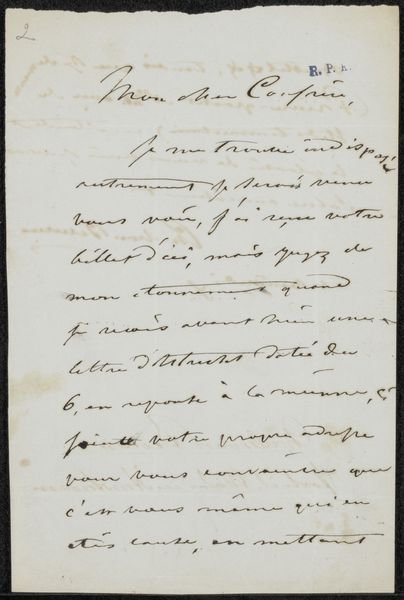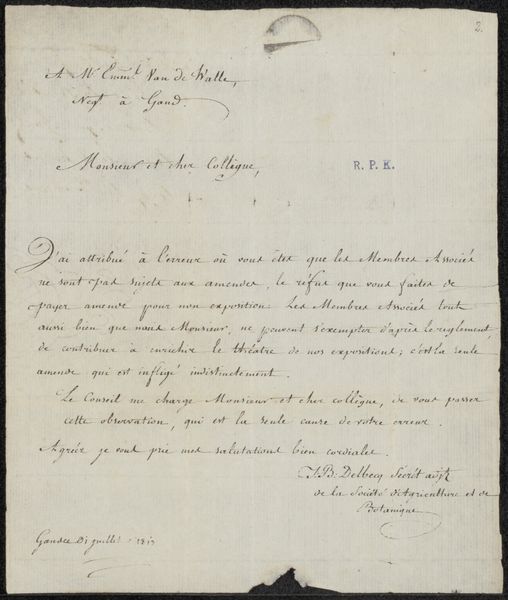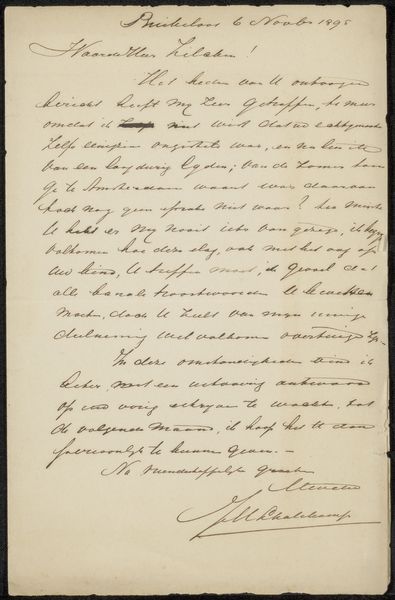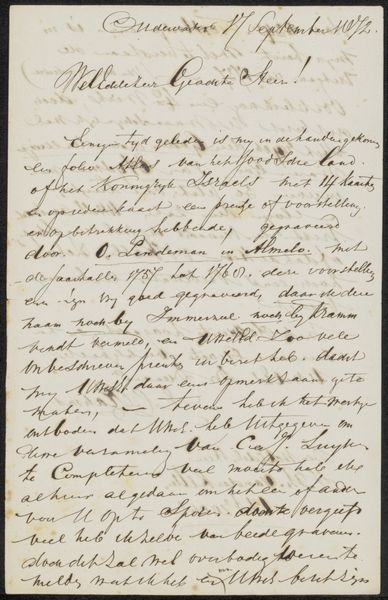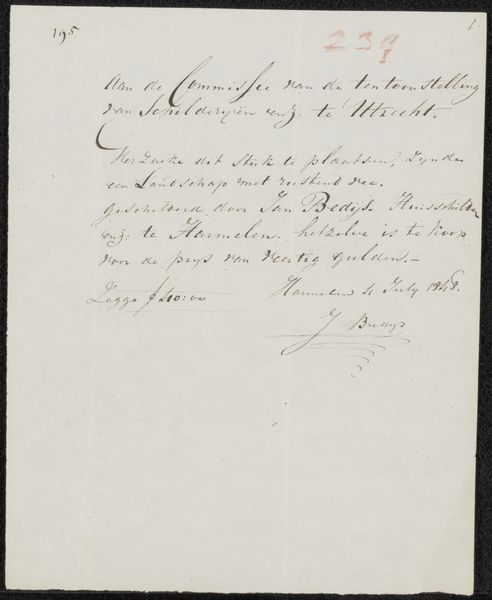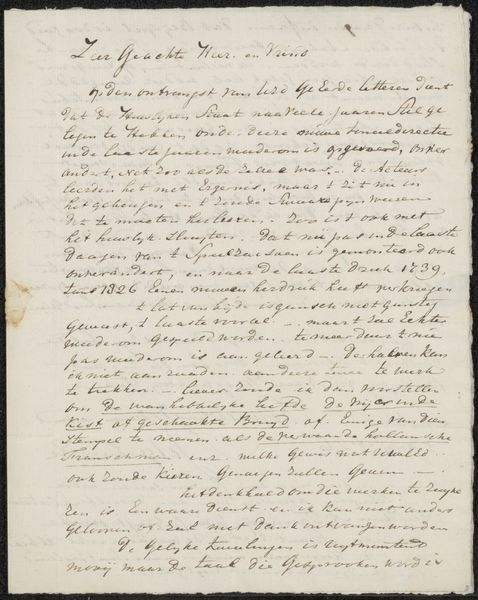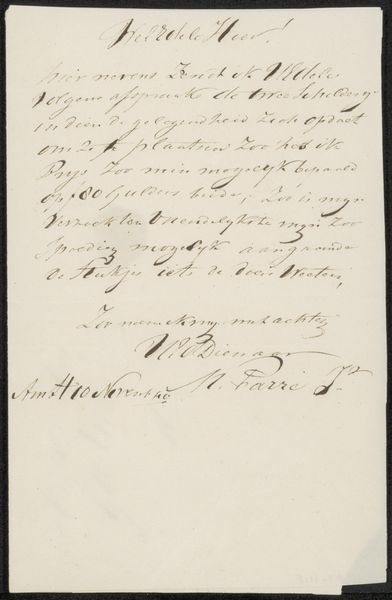
Brief aan de vader en moeder van Gerard van Spaendonck Possibly 1769
0:00
0:00
gerardvanspaendonck
Rijksmuseum
drawing, paper, ink
#
portrait
#
drawing
#
dutch-golden-age
#
paper
#
ink
Copyright: Rijks Museum: Open Domain
Curator: Welcome. Today, we’re looking at "Brief aan de vader en moeder van Gerard van Spaendonck," or “Letter to the Father and Mother of Gerard van Spaendonck,” likely penned in 1769. This work is part of the Rijksmuseum's collection and done in ink on paper. Editor: It feels surprisingly intimate, even from a distance. The script is so fine, so personal… It almost feels like peering over someone's shoulder while they're writing. There is something nostalgic in the texture of paper and old ink. Curator: Indeed, the material aspects contribute significantly to this sense of intimacy. The paper itself would have been carefully made, each batch unique. You see the marks of the quill, the varying pressure applied by Van Spaendonck, and this human element ties directly to labor and production of its time. It speaks of a time when communication was a crafted process. Editor: Looking closely, I notice repeated symbolic gestures within the language. Although I cannot precisely read Dutch from the 18th century, phrases like "missive," the almost formulaic greetings, evoke established customs. The very act of writing to one’s parents carried cultural weight, indicating respect and familial bonds. What are these “Passschen”, the “Easter” which is mentioned repeatedly here? Curator: Ah, that’s key. Knowing that, as the letter likely discusses arrangements related to the Easter holiday, emphasizes the cycle of the liturgical year structured social life at that time. Perhaps he is ordering or acknowledging textiles or supplies? That would have involved skilled artisans, trade routes and, therefore, considerable commercial networks. So the "letter" speaks to consumption too, wouldn’t you agree? Editor: Absolutely. These Easter references give a lens into social values and aspirations of the period. His mentions suggest, not only a logistical and economic plan of Easter supplies for this period, but also possibly express his reverence through consistent reminders and traditions from past generations. These mentions tie us emotionally through centuries. Curator: I agree, thinking through both social and devotional lives woven into something that appears, simply, as material documentation allows an entrance to fully imagine Spaendonck’s history. Editor: In seeing beyond Spaendonck’s message within a family context, the piece reveals links across society itself; a truly evocative piece beyond ink and paper.
Comments
No comments
Be the first to comment and join the conversation on the ultimate creative platform.
